ROCHAS SILICICLÁSTICAS e POLICROMÁTICAS



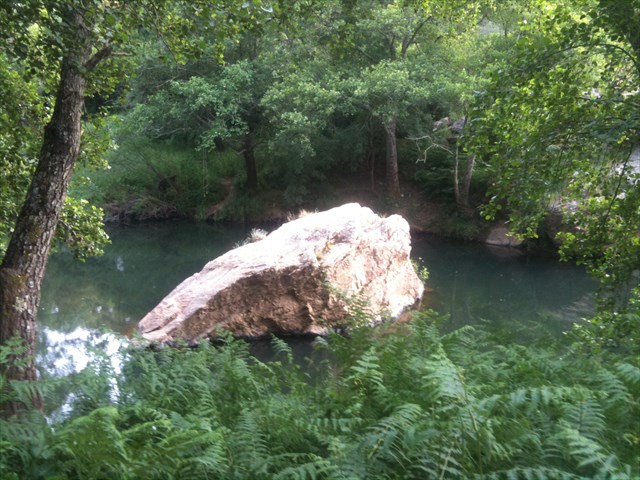

EARTHCACHE
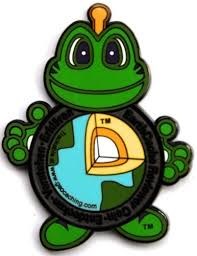
PORTUGUÊS

RIBEIRA DO TORGAL/PEGO DAS PIAS
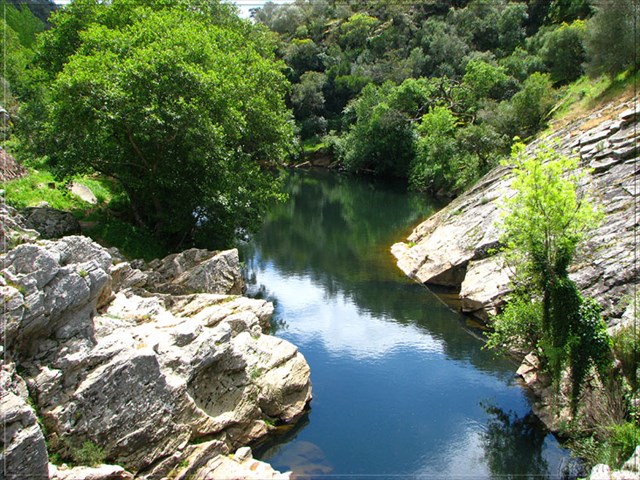
A Ribeira de Torgal é uma ribeira situada em Portugal, no conselho de Odemira, que desagua no Rio Mira, tendo paisagens espetaculares, assim como uma grande maravilha da Natureza, o Pego das Pias. O Trilho do Torgal estende-se ao longo de uma densa galeria ripícola com encostas declivosas e densamente povoadas por vegetação, incluindo choupos, amieiros, salgueiros, sobreiros e azinheiras, sendo uma área classificada na Rede Natura 2000.
Entre S. Luís e Odemira, situado na zona norte da Freguesia de S. Salvador, na zona dos Ameixiais, isolado, entre rochas altas e um verde luxuriante, existe um lugar muito especial, o Pego das Pias. O Pego das Pias é um sítio de uma beleza única.
O seu nome tem origem nas diversas cavidades circulares na rocha, provocadas aparentemente por redemoinhos numa altura em que o nível das águas no local era superior ao actual, pelo menos a avaliar pelas marcas deixadas na rocha. A força do caudal das águas associada ao declive da zona deverá ter provocado os redemoinhos que perfuraram a rocha criando as chamadas "pias" .
O Pego das Pias quase não tem marcas de intervenção humana e tem-se mantido como uma espécie de ex-libris natural da região, motivando um enorme interesse e a visita de muitos curiosos e amantes da natureza.
Zona Sul Portuguesa: Enquadramento Geológico
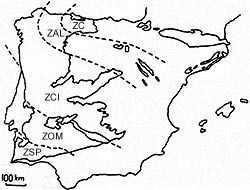
“A Zona Sul Portuguesa (ZSP) constitui uma entidade bem individualizada no contexto da geologia do Maciço Hespérico. Em termos de interpretação tectono-estratigráfica são reconhecidos quatro domínios (ou sectores):
1 - Antiforma do Pulo do Lobo,
2 - Faixa Piritosa,
3 - Grupo do Flysch do Baixo Alentejo,
4 - Sector Sudoeste, com sedimentação siliciclástica em ambientes de margem continental, durante o Devónico Superior, à qual se seguiu o desenvolvimento de uma plataforma mista argilo-carbonatada, que se manteve estável até ao Namuriano Superior, altura a partir da qual passou a ficar integrada na bacia profunda com sedimentação turbidítica.
A ZSP apresenta estruturação tectónica dominantemente orientada para NO-SE, a qual resultou de dois episódios compressivos principais, materializados por dobras, falhas e carreamentos”.
ROCHAS SILICICLÁSTICAS

São as acumulações de partículas clásticas, ou seja, aquelas geradas pela fragmentação das rochas pré-existentes na superfície, sujeitas a intemperismo. Estes sedimentos são também chamados de siliciclásticos, pois são gerados a partir de rochas compostas predominantemente por silicatos. A mistura de minerais nestes sedimentos é variada, mas a presença de quartzo inalterado, que é um mineral resistente ao intemperismo, é comum nos sedimentos clásticos. Outros minerais presentes são o feldspato, os minerais argilosos e outros. Quanto à forma e granulometria, estes sedimentos são bastante variados: desde matacão a seixo, de areia a argila. A forma destas partículas é definida pelo mecanismo de fracturação e quebra.
(Adaptado de: https://pt.wikipedia.org/wiki/Sedimento)

Enquadramento Geológico local

O local desta EarthCache, a norte de Odemira, encontra-se no sector NW da ZSP. Na carta geológica à escala 1:1000000 as rochas estão classificadas em grandes unidades compostas por metavulcanitos ácidos e básicos e filitos pertencentes à faixa Piritosa. Contudo a escalas maiores esta classificação pode ser ampliada e pormenorizada. Dado, as características siliciclásticas dos filitos, neste local, ocorrer um fenómeno de tafone.
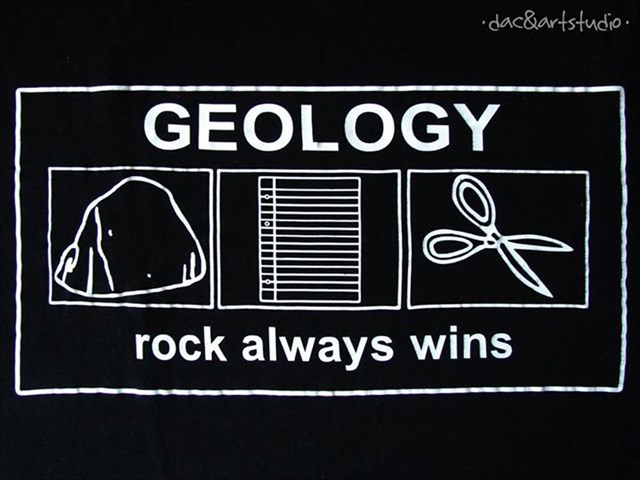
PARA REALIZAR E REGISTAR ESTA EARTHCACHE:
PERGUNTAS:
Para “encontrar/registar” esta cache deverá: provar que esteve no local e responder às seguintes questões, enviando um email/mensagem de Geocaching, com as respostas, em português ou em inglês, para o nosso perfil.
Só depois, de enviar as respostas, e conforme as “guidelines” para as Earthcaches, deverá efetuar o seu registo!
Serão removidos todos os registos que não obedeçam a estes requisitos.
1. Estudando, a partir do GZ, o tema geológico proposto nesta earthcache, responde às seguintes questões:
a) Classifica as rochas da Zona onde se situa esta EC.
b) Explica, por palavras tuas, o que são rochas silicilásticas.
2. No paredão, perto do GZ e perto das rochas vermelhas, existe uma zona com um “fenómeno”, que parece uma rocha esburacada!
a) Qual o nome desta “fenómeno”. Define-o, do ponto de vista geológico.
b) Qual a cor desta “fenómeno”?
c) Estima a área (em m2) ocupada por este “fenómeno”.
3. Observando o paredão, a partir do GZ, responde às seguintes questões:
a) Estima a altura do paredão que apresenta tanta variedade cromática.
b) No paredão, junto ao GZ, está, infelizmente, gravada uma palavra e um símbolo! Qual é a palavra?
4. Desenha o símbolo existente abaixo da palavra. Envia-o para: lfbcmmachado@sapo.pt
5. TAREFA OBRIGATÓRIA:Deverá tirar uma foto sua, onde você apareça (ou com um papel/placa onde conste o seu nickname e a data da visita) e que comprove a sua presença no GZ desta EC - NÃO METASPOILERS. Esta foto deverá ser colocada no seu registo ou enviada por email ou sistema de mensagens de Geocaching, para o owner!
Não responderemos ao seu contato, a não ser que haja algum “problema” com as suas respostas ou registo.

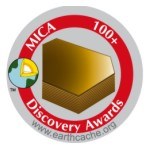
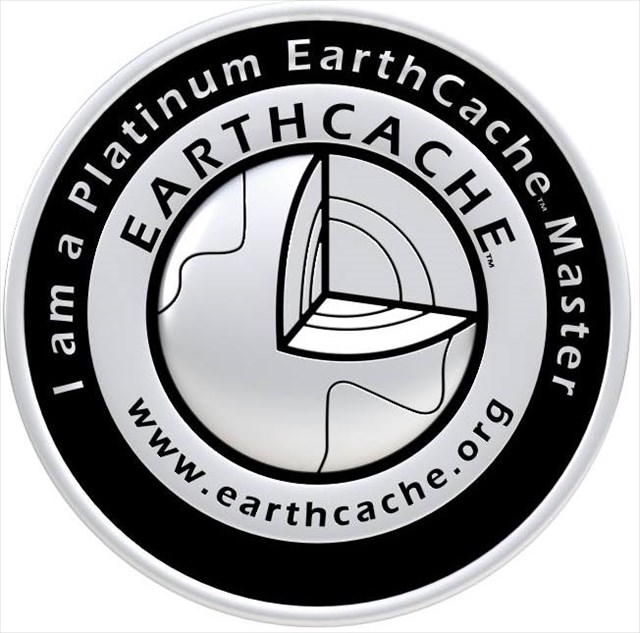

Siliciclastic and polychromatic ROCKS

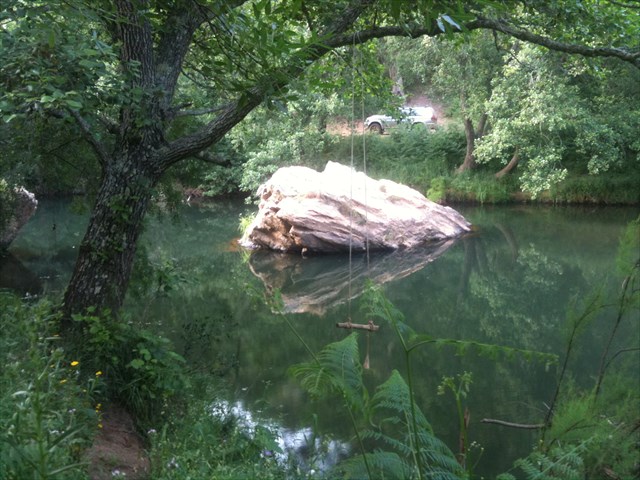
ENGLISH

EARTHCACHE
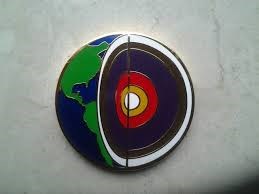
“RIBEIRA DO TORGAL/PEGO DAS PIAS”
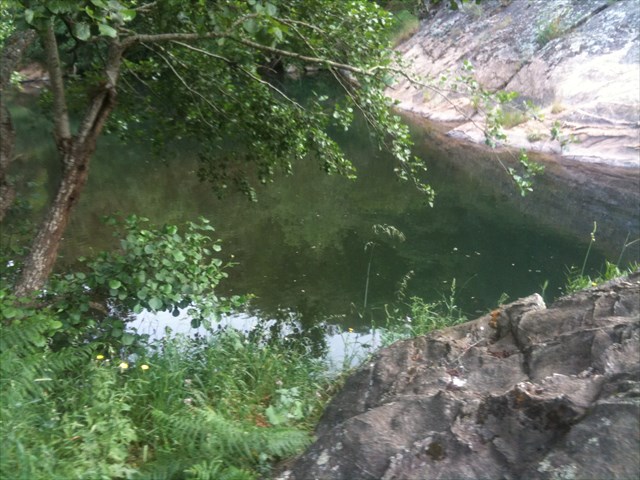
The Torgal Riverside is a river located in Portugal, on the advice of Odemira, which flows into the Mira River, with spectacular scenery as well as a great wonder of nature, the Pego das Pias. The Torgal Rail extends along a dense riparian gallery with steep slopes and densely populated by vegetation, including poplars, alders, willows, oaks and oaks, and a hazardous environment in the Natura 2000 network.
Between St. Louis and Odemira, situated in the north of St. Saviour Parish in the area of Ameixiais isolated between high rocks and lush greenery, there is a very special place, the Pego das Pias. The Pego das Pias is a place of unique beauty.
Its name arises in several circular cavities in the rock, apparently caused by whirlpools at a time when the water level in the current location was superior, at least judging from the marks left on the rock. The strength of the flow of water associated with the area's slope should have triggered swirls that pierced the rock creating so-called "sinks".
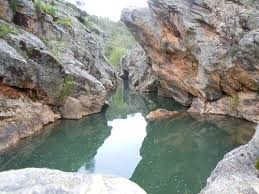
The “Pego das Pias” has almost no marks of human intervention and has remained as a kind of natural landmark of the region, prompting a huge interest and was visited by many curious and nature lovers.
South Portuguese zone: Geological Environment

"The South Portuguese Zone (ZSP) is a well individualized entity in the context of the Hesperian Massif geology. In terms of tectonic and stratigraphic interpretation are recognized four areas (or sectors):
1 - Antiform the “Pulo do Lobo”,
2 - Pyrite Belt,
3 - Flysch group of Baixo Alentejo,
4 - Southwest sector with siliciclastic sedimentation in continental margin settings, during the Upper Devonian, which was followed by the development of a clay-mixed carbonated platform, which remained stable until the Namuriano Superior, height from which went on to become integrated into deep bowl with turbidite sedimentation.
The ZSP tectonic structure presents dominantly oriented NO-SE, which resulted in two major compressive episodes, materialized by bends, faults and carreamentos ".
Siliciclastic rocks
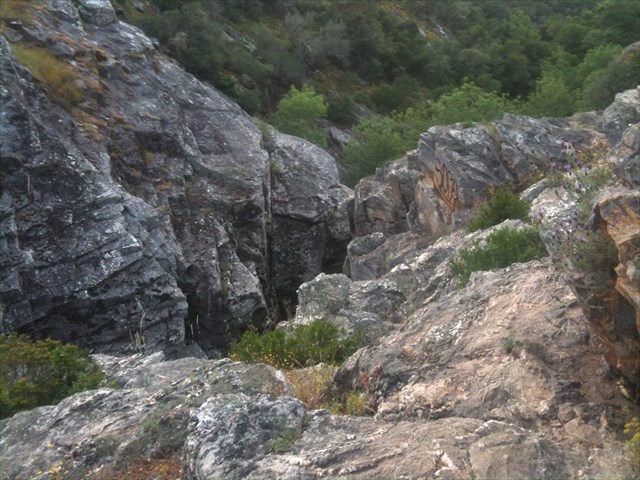
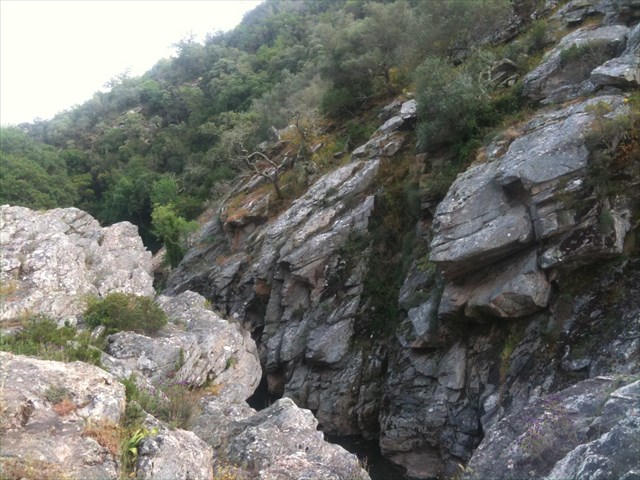
Are accumulations of clastic particles, ie those generated by the fragmentation of pre-existing rocks on the surface, subject to weathering. These sediments are also called siliciclastic because they are generated from composed mainly of silicate rocks. The mineral mix is varied in these sediments, but the presence of unchanged quartz, which is a mineral resistant to weathering, it is common in clastic sediments. Other minerals present are feldspar, the clay minerals and others. In form and grain size, these sediments are quite varied: from boulder to boulder, sand clay. The shape of these particles is defined by the fracturing and break mechanism.
(adapted from: https://pt.wikipedia.org/wiki/Sedimento)
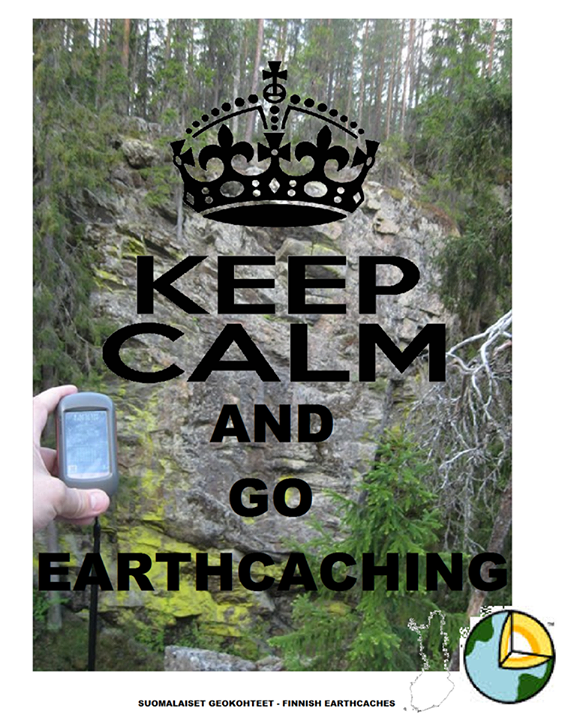
Geologic framework
The location of this EarthCache, north of Odemira, lies in the NW sector of the ZSP. The geological map at 1: 1,000,000 the rocks are classified into large units composed of metavulcanitos acidic and basic phyllites and belonging to Pyrite range. Yet the larger scales this classification can be expanded and detailed. Given the characteristics of siliciclastic phyllites, at this location, there is a tafone phenomenon.
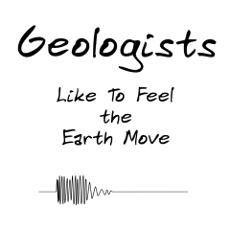
TO PERFORM AND LOG THIS EarthCache:
QUESTIONS:
To "find / register" this cache must: prove that visited the site and answer the following questions by sending an email / message Geocaching, with answers (in Portuguese or in English, only) to our profile.
Only later, sending the answers, and as the "guidelines" for EarthCaches should make your registration! They will be removed from all records that do not meet these requirements.
1. Studying from the GZ, the geological theme proposed this EarthCache,
answer the following questions:
a) Sorts the rocks Zone where is this EC.
b) Explain, in your words, which are silicilásticas rocks.
2. On the wall, near the GZ and close to the red rocks, there is an area
with a "phenomenon" that looks like a bumpy rock!
a) What is the name of this "phenomenon." Defines it, from the geological point of view.
b) What is the color of this "phenomenon"?
c) estimated area (in m2) occupied by this "phenomenon."
3. Observing the wall, from GZ, answer the following questions:
a) estimated the height of the wall that has so much color variety.
b) in the wall, next to GZ, is unfortunately recorded a word and a symbol! what's the word?
4. Draws the existing symbol below the word. Send it to: lfbcmmachado@sapo.pt
5. TASK (not optional): You must take a picture of yourself, where do you show up, (or with a paper / plaque with your geocaching nickname and the date of the visit) and that proves your presence in the GZ of this EC - no spoilers please. This photo must be placed in your log or sent by email or Geocaching messaging system, to the owner!

We do not respond to your touch, unless there is a "problem" with their answers or register.



